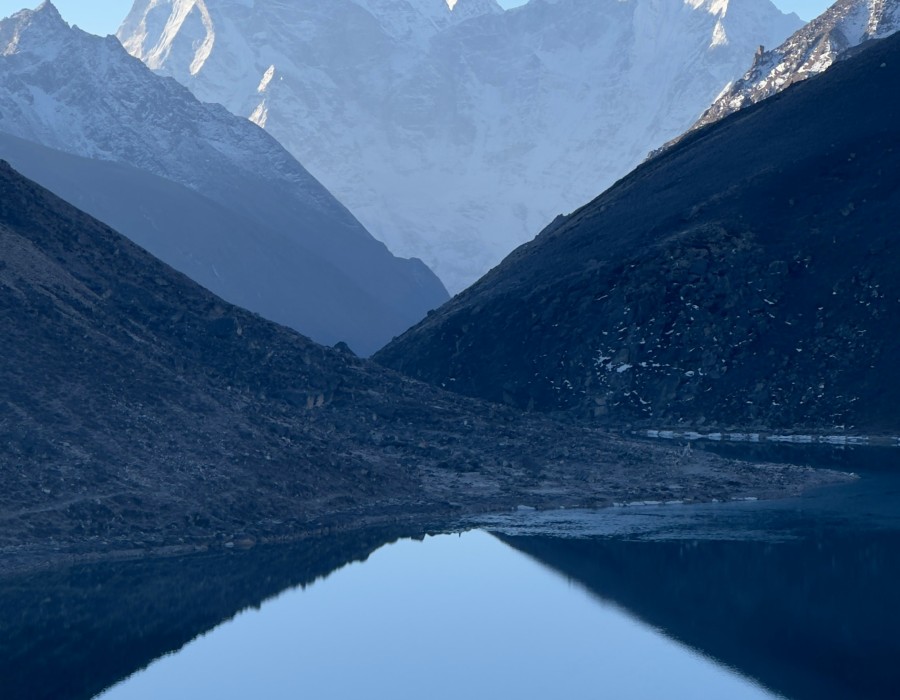Introduction
The Gokyo Valley Trek in Nepal's Everest region is a lesser-trodden path compared to the Everest Base Camp trek, yet it offers some of the most spectacular views and serene landscapes in the Himalayas. This trek is a blend of high-altitude adventure, cultural immersion, and natural beauty, making it a captivating alternative for those seeking a unique Himalayan experience.
An Overview of the Route
Starting Point: It starts with an exciting flight from Kathmandu to Lukla, followed by trekking through the Sagarmatha National Park, as is the case with many treks in the Everest region.
It usually lasts 12 to 14 days, giving plenty of time for exploration and acclimation.
Highlights: The Gokyo Lakes, the Ngozumpa Glacier, and the expansive views from Gokyo Ri are the trek's most well-known features.
Highest Point: Gokyo Ri has one of the best views in the Everest area from its 5,357-meter elevation.
Daily Experience
Day 1: Get to Kathmandu; preparation and cultural exploration kick off the experience.
Day 2: Take a plane to Lukla and hike to Phakding, where the real Himalayan adventure begins.
Day 3: Proceed to Namche Bazaar, which is the entry point to the Khumbu region and is well-known for its thriving Sherpa marketplaces and culture.
Day 4: Namche acclimatization day. Explore or go for a quick hike to get a better view.
Day 5: Trek to Dole, where you can see the surrounding peaks as you approach more isolated places.
Day 6: The trail gets calmer from Dole to Machhermo, where you can see glimmers of Cho Oyu.
Day 7: Arrive in Gokyo, where the first of the Gokyo Lakes welcomes you and sets the scene for the highlight of the following day.
Day 8: A sunrise climb to Gokyo Ri for views of Cho Oyu, Makalu, Lhotse, and Everest. Explore the Gokyo Lakes later.
Days 9–12: Depending on the schedule, you may go back to Namche straight, climb the picturesque Renjo La pass, or continue on to Cho La to reach Everest Base Camp.
Day 13: Return to Lukla by trekking while taking in the shifting scenery.
Day 14: The expedition comes to an end with a return flight to Kathmandu.
Natural and Cultural Wonders
Sherpa Culture: From touring monasteries to dining at neighborhood tea houses, the walk provides in-depth explorations of Sherpa customs.
The Gokyo Lakes are a group of six beautiful, high-altitude lakes that provide a serene contrast to the untamed landscape and are revered by the locals.
The largest glacier in Nepal, Ngozumpa Glacier, is visible from Gokyo Ri and lends an unearthly beauty to the journey.
Difficulties and Planning
Altitude: Although the Gokyo Valley is less populated, it is at a high elevation, thus acclimatization is essential to prevent altitude sickness.
Fitness: Because of the lengthy walking days and elevation climbs, good physical condition is required.
Equipment: It is crucial to have the right trekking equipment for cold, high-altitude situations, such as warm clothes, sturdy footwear, and watering systems.
Accountability for the Environment
Sustainability: 'Leave No Trace' guidelines, local economic support, and involvement in or support of local conservation initiatives are all recommended for trekkers.
In conclusion
The Gokyo Valley Trek is a voyage through a world where the majesty of nature and cultural legacy coexist, not just a traversal of different landscapes. With the extra excitement of high passes and the peace of glacial lakes, it's ideal for anybody looking to go away to the quiet of nature. The Gokyo Valley promises a journey that is both difficult and incredibly rewarding, regardless of your level of skill as a trekker or your desire for a meaningful travel experience.





Comments